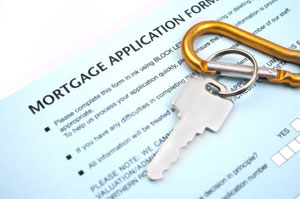What Are Some of the HARP 2.0 Limitations?
By Liz Clinger Updated on 7/21/2017 HARP 2.0 Takes Time
HARP 2.0 Takes Time
The HARP application process could take months to complete. Lenders who manually underwrite mortgages could start refinancing applications immediately; however, those who depend on automated software to underwrite mortgages must wait until updates are made.
With numerous lenders relying on this type of system, the refinance process could face sizeable delays.
Not Everyone Qualifies for HARP 2.0
In addition to delays, HARP refinances have requirements limiting the number of eligible borrowers. Regarding basic HARP 2.0 qualifications, mortgages must be owned by either Fannie Mae or Freddie Mac and must have been acquired before June 1, 2009.
Furthermore, the program requires that borrowers miss no more than one payment during the past year and have no missed payments within the past six months.
If borrowers do not satisfy even one of these criteria, they will not be able to qualify for a HARP refinance.
HARP Refinances are not Repeatable
Borrowers who have already performed a HARP 2.0 refinance will immediately be ineligible for any future HARP refinances.
Unfortunately, this includes many borrowers whose needs were not entirely met during the first incarnation of the HARP program but who had limited financial alternatives at the time.
Lenders Add Restrictions to HARP 2.0
Lender participation in the HARP refinance program is voluntary, and lenders have no obligations to assist underwater homeowners by funding refinance mortgages.
When HARP was initially released, many eligible homeowners were rejected for refinance applications due to lenders being unwilling to assume the risk.
Furthermore, many lenders impose their unique guidelines to the HARP program, offering this refinance option to an even more select group of borrowers.
In many cases, lenders enforce restrictions on HARP loan-to-value ratios, despite the fact that the general HARP requirements do not impede borrowers with a maximum allowable LTV ratio.
HARP 2.0 Does Not Reduce the Balance
One common misconception about the Home Affordability Refinance Program is that it decreases the amount of debt which borrowers owe on a property.
While the program assists borrowers with debt, HARP does not reduce the principal balance of the mortgage loan, meaning that borrowers will still be responsible for paying the entirety of their debt.

Didn't find the answer you wanted? Ask one of your own.
-
 HARP 2.0 Requirements
View More
HARP 2.0 Requirements
View More
-
 Analyzing HARP Market Interest Rates
View More
Analyzing HARP Market Interest Rates
View More
-
 Can I Refinance an Investment Property with HARP?
View More
Can I Refinance an Investment Property with HARP?
View More
-
 What Banks Will Give Me a HARP 2.0 Refinance Loan?
View More
What Banks Will Give Me a HARP 2.0 Refinance Loan?
View More
-
 How to Overcome HARP Refinance Qualification Obstacles
View More
How to Overcome HARP Refinance Qualification Obstacles
View More
-
 HARP 2.0 Appraisal
View More
HARP 2.0 Appraisal
View More
-
 What Do I Need for a HARP Application?
View More
What Do I Need for a HARP Application?
View More
-
 What is the HARP 3 Refinance?
View More
What is the HARP 3 Refinance?
View More
-
 HARP 2.0 FAQ
View More
HARP 2.0 FAQ
View More
-
 HARP 2.0 Eligibility and Qualifications
View More
HARP 2.0 Eligibility and Qualifications
View More
Related Articles
Ask our community a question.
Searching Today's Rates...

Featured Lenders
Kat Whitman
Whitman Met, Inc.
Sacramento, CA
Cameron Burke
Vision One Mortgage
Huntington Beach, CA
Lisa Stepp
RBS Citizens
Clifton Park, NY

 HARP 2.0 Takes Time
HARP 2.0 Takes Time